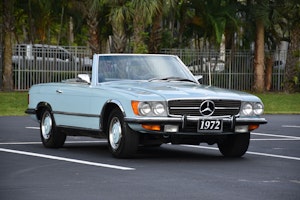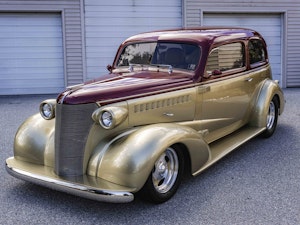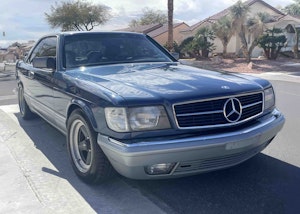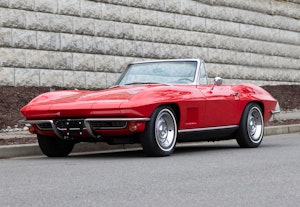Media | Articles
Piston Slap: Proper ventilation of the Midget’s crankcase?

Tony writes:
I have a 1976 MG Midget in which the original SU carburetors and manifold have been replaced with a progressive two-barrel Weber DGEV and its associated manifold. With this arrangement the PCV valve and plumbing to the intake manifolds no longer exists, so the valve cover vent port is now plumbed to an enclosed catch can that vents via a hose to atmosphere below the engine (like back in the ’50s). Will the lack of manifold vacuum to draw off of the valve cover cause over-pressurization of the rear seal and such? I’ve noted considerable oil consumption and oil leaks (as in every classic British car).
The car has approximately 58,500 miles. Compression is in the 175–180 range on all four cylinders. I did plumb the catch can outlet to the carburetor side of the air cleaner but noted very dirty spark plugs. Again, there was no PCV valve in either arrangement. If I add a PCV valve between the valve cover vent port and catch can and run the discharge of the vent can back to the carburetor intake, do you feel that will help or worsen the problem? The engine runs like a champ, is very responsive, and there is no smoke from the exhaust.
Sajeev answers:
Sounds like you are doing everything right: Running the catch can from the valve cover and exiting to atmosphere is acceptable for a 1976 Midget in most states (i.e. California might say otherwise). And those compression numbers sound good for a low-compression, Malaise-Era engine. So my concerns stem from the following (in this order):
Marketplace
Buy and sell classics with confidence
- Clogged side cover breathers, if they exist on the 1500-series engine.
- Hose quality to and from the catch can.
- Poor quality catch can.
The biggest issue is that the side cover breathers—which I am somewhat confident you have—get clogged full of oil/sludge/carbon and no longer allow for crankcase ventilation. So remove the assemblies from the engine, yank out the metal mesh, and replace with new material. You could clean the mesh by soaking it in carburetor cleaner, but the internet suggests using copper scrubbing pads (grocery store) since they are cheap and fit easily.
From there, let’s discuss the hoses running to and from the catch can. You need a reinforced hose that won’t have a chance to suck itself shut, thereby eliminating its effectiveness. So use emissions/fuel line hose (designed for both, in case you need fuel line in the future) in the appropriate diameter. Lastly, catch cans come in various qualities, but odds are their failures wouldn’t cause a major blockage: This is merely something to keep in mind.
What if all three potential problem areas pass muster? Remove the catch can/hoses, and replace with a crankcase “breather” filter mounted directly to the valve cover. If the breather filter fails to correct oil consumption (and, likely, pukes oil) you might have a bigger problem with the oil control ring(s) in the engine. But I shall remain optimistic!
What say you, Hagerty Community?
Have a question you’d like answered on Piston Slap? Send your queries to pistonslap@hagerty.com, give us as much detail as possible so we can help! If you need an expedited resolution, make a post on the Hagerty Community!









